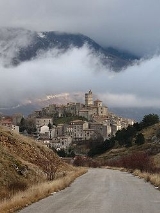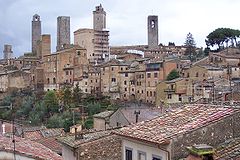
Hilltowns in Italy
Encyclopedia
Built upon hills for defensive purposes, surrounded by thick defensive walls, steep embankments, or cliffs, these Italian hilltop settlements provided natural defenses for their earliest inhabitants. In the Middle Ages, earthworks and stone and wooden palisades were typically replaced with massive stone and masonry walls, sturdy gates, and watch towers. In the late Middle Ages and Renaissance, even some of the smallest and most remote hill towns were adorned with churches housing works of art and impressive noble residences.
Italy's hill town
s have been studied for the communities that inhabited them, as repositories of Medieval and Renaissance art, and for their architecture. The construction techniques used to build these hill towns have even been studied by seismologists to understand why their ancient masonry and stone structures often survive earthquakes that destroy nearby modern buildings.
 In the second half of the 20th century, many of Italy's lesser-known hill towns, especially those located outside Tuscany and Umbria, experienced steep population declines as their residents left for urban centres. In recent years, this trend has reversed with a deepening appreciation of Italian hill towns and interest in their preservation.
In the second half of the 20th century, many of Italy's lesser-known hill towns, especially those located outside Tuscany and Umbria, experienced steep population declines as their residents left for urban centres. In recent years, this trend has reversed with a deepening appreciation of Italian hill towns and interest in their preservation.
See the category listing Hilltowns in Italy for a comprehensive list of Italian hill towns.
Italy's hill town
Hill town
Hill town is the term used to describe citadel towns built upon hills to ward off invaders. Often protected by defensive walls, steep embankments, or cliffs, such hilltop settlements provided natural defenses for their inhabitants....
s have been studied for the communities that inhabited them, as repositories of Medieval and Renaissance art, and for their architecture. The construction techniques used to build these hill towns have even been studied by seismologists to understand why their ancient masonry and stone structures often survive earthquakes that destroy nearby modern buildings.

See the category listing Hilltowns in Italy for a comprehensive list of Italian hill towns.

